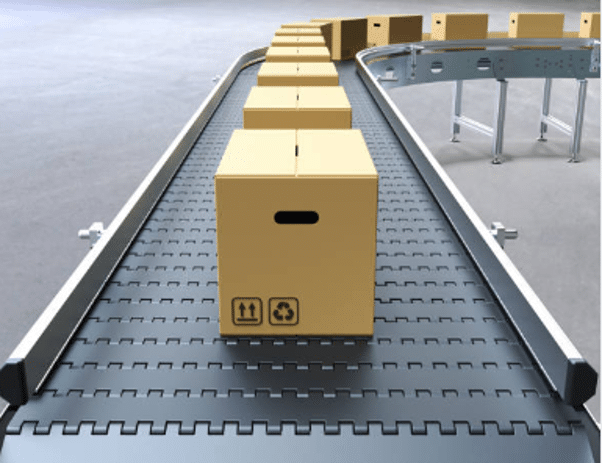Shipping orders can be daunting, but it doesn’t have to be. Let’s talk about how you can speed up your process of order shipments.
What is the Shipping Process?
The shipping process typically includes several steps that may lead to delivery delays between when an order is placed and when the customer receives the product. Here are the basic steps of the shipping process:
1. Receiving an order
The process begins when a customer places an order for a product online or through other channels, such as phone or email.
2. Picking and packing
The seller will then pick the product from their inventory, pack it securely and prepare it for shipment.
3. Generating shipping labels
The seller will then generate a shipping label that includes the customer’s address and other relevant information.
4. Carrier pick-up
The shipping carrier then picks up the package from the seller’s location, or the seller may drop it off at a carrier’s location.
5. Transportation
The shipping company or carrier transports the package from the seller’s location to the destination, which may involve various transportation modes, such as trucks, planes, and ships.
6. Customs clearance
The package may go through customs clearance in the final destination or country for international shipments, which can involve inspections and additional paperwork.
7. Final delivery
The package is delivered to the customer’s address via same-day shipping and delivery only, either by the shipping carrier or local delivery service. Throughout the shipping and packing process, tracking information is typically available to the seller and the customer, allowing them to monitor the shipment’s progress and estimate the delivery date.
What is Ordering Processing Software?

Order processing software is a type of software used to manage the process of fulfilling orders, from receiving an order to delivering the product to the customer. The software helps automate and streamline the order processing and delivery process, saving time and reducing errors.
Order processing software typically includes features such as:
1. Order management
This allows you to manage and see customer demand and track orders from multiple sales channels in one place.
2. Inventory management
This enables you to track inventory levels, receive alerts when inventory levels are low, and manage stock across multiple locations.
3. Shipping management
This lets you to generate shipping labels, track shipments, and manage carrier integrations.
4. Payment processing
With this, you can process payments, manage refunds, and handle chargebacks.
5. Reporting and analytics
These provide data and analytics on order processing, inventory levels, and sales performance.
6. Integration with other systems
This allows you to integrate with other systems, such as accounting software, customer relationship management (CRM) software, and e-commerce platforms.
By using order processing software, businesses can streamline their warehouse operations, improve order accuracy, and provide better customer service.
Order Processing Explained

Order processing is the series of steps involving the fulfillment of a customer’s order, from the first step of order placement to the product’s final delivery. Throughout the order processing process, the customer is kept informed about the status of their order, including shipping and delivery information. Order processing is critical to the success of any business as it directly impacts customer satisfaction and retention. Efficient and accurate order processing can top customer expectations and lead to satisfied and loyal customers, repeat business, and positive reviews, while inaccurate or slow order processing can lead to customer dissatisfaction and loss of business.
5 Steps in Order Processing Workflow

Order placement
This is the first step in the order processing workflow, where customers place their orders, either through an online store or by other means like phone, email, or in-person.
Picking inventory
Once the order is placed, the next step is to pick the items from the available inventory. This involves locating the items in the warehouse or storage facility and preparing them for the next stage of the process.
Sorting
Once the items are picked, they need to be sorted according to the order details. This involves matching the items with the order and ensuring that everything is in the correct quantity and quality.
Packing
After the items are sorted, they need to be packed carefully to prevent damage during shipping. The packing materials used will depend on the nature of the products being shipped and the shipping method.
Shipping
The final step in the order processing workflow is shipping the products to the customer. This involves selecting the appropriate shipping method and carrier, generating shipping labels and tracking information, and ensuring that the products are delivered to the correct address on time. These five steps are crucial in ensuring that orders are processed accurately and efficiently, leading to faster delivery, customer satisfaction, and repeat business.

Order Processing Factors

Several factors can impact a business’s order processing. These include the following:
Order volume
The volume of orders a business receives can impact order processing. A high volume of orders may require additional resources or automation tools to manage efficiently.
Product availability
The availability of products in inventory can impact the fulfillment of order processing. If a product is out of stock, it may delay the order fulfillment process and lead to customer dissatisfaction.
Payment processing
Payment processing can impact order processing. Delays in payment processing can delay order fulfillment, while payment fraud can lead to losses for the business.
Shipping logistics
Shipping logistics, including carrier availability and shipping times, can impact order processing and the standard delivery process. Choosing reliable and efficient shipping options can help ensure timely delivery and customer satisfaction.
Order accuracy
The accuracy of orders is critical to successful order processing. Incorrect orders can lead to customer dissatisfaction, returns, and lost revenue.
Technology
Technology tools like order-processing software can impact how a business processes and tracks orders. Using the right tools can streamline the process, reduce errors, and increase efficiency.
By considering these factors, businesses can optimize their order processing and provide a positive customer experience.
Tips to Improve Order Processing

Here are some tips to improve order processing for a business:
Automate processes
Use order processing software to automate business processes, including order processing workflow, management, inventory management, and shipping management. This can help reduce errors and save time.
Streamline order management
Use a centralized system to manage orders from multiple channels in one place. This can help ensure accurate and efficient order processing.
Use real-time inventory tracking
Use inventory tracking software to track inventory levels in real time. This can help prevent stock-outs and ensure timely order fulfillment.
Optimize shipping
Choose reliable, fast delivery and efficient shipping options to ensure timely delivery and reduce shipping costs.
Offer multiple payment options
Offer customers multiple payment options to make it easy for them to complete their purchases. This can include credit cards, PayPal, and other payment methods.
Monitor order accuracy
Use quality control measures to ensure that orders are accurate and complete. This can include spot-checking orders and performing quality control checks on delivery routes.
Communicate with customers
Keep customers informed about the status of their orders through regular updates and notifications. This can help reduce customer inquiries and improve customer satisfaction. By implementing these tips, businesses can improve delivery speed and their order processing process, reduce errors, save money, and provide a better customer experience.
Optimize Order Processing with Calcurates

Calcurates is a cloud-based shipping and warehouse management system and shipping solution that can help businesses optimize their order processing process. Here are some ways that Calcurates can help:
Shipping rates optimization
Calcurates offers shipping rate calculation tools that can help businesses choose the most cost effective and fast shipping options for their orders.
Real-time shipping tracking
Calcurates provides real-time shipment tracking and shipment information, which can help businesses keep customers informed about the status of their orders.
Automated order processing
The software also offers automation tools for order processing, which can help reduce errors and save time.
Multi-carrier support
Calcurates supports multiple shipping carriers, which can help businesses choose the most appropriate carrier for each order.
Flexible shipping rules
With Calcurates, businesses can enjoy flexible shipping solutions that can help them customize their own shipping processes and policies to meet their specific needs.
Integration with e-commerce platforms
Calcurates integrates with popular e-commerce platforms, such as Shopify and Magento, which can help streamline order processing. In short, Calcurates can be beneficial to businesses in many ways. It helps businesses optimize order processing, reduce errors, and save time and money on shipping costs.

The Bottom Line
In conclusion, speeding up the process of order shipments is essential for businesses that want to meet customer expectations and stay competitive. By optimizing the order processing workflow, businesses can reduce the time it takes to fulfill orders and improve their overall efficiency. It is also important to maintain clear communication with customers throughout the entire process and provide them with timely updates on the status of their orders. By implementing the strategies mentioned above and continuously evaluating and refining the order processing workflow, businesses can improve their order fulfillment speed, reduce errors, and increase customer satisfaction. Ultimately, this can lead to higher sales, better customer retention, and a stronger business reputation.

